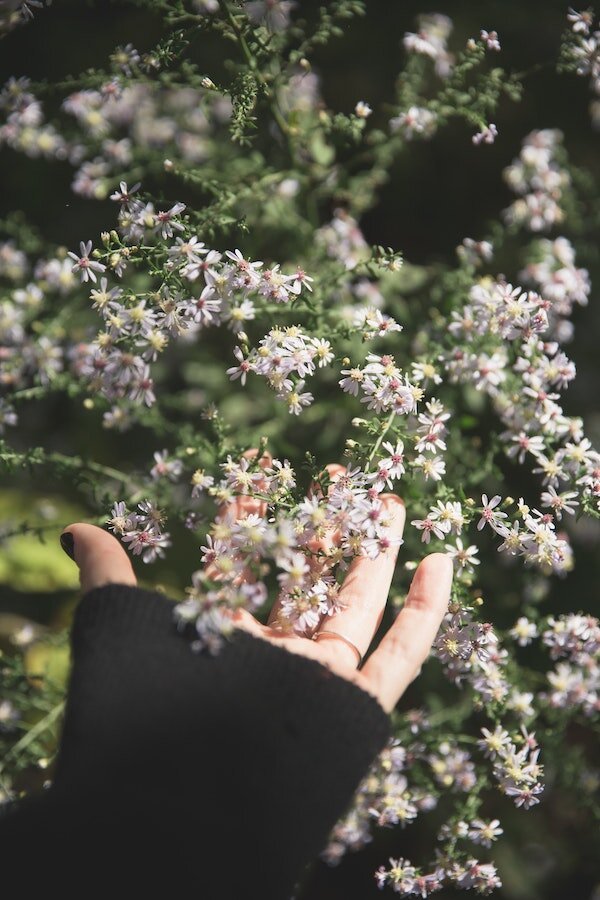
What Is Forest Bathing?
The Art of Embracing The Trees
“We all know how good being in nature can make us feel. We have known it for millennia. The sounds of the forest, the scent of the trees, the sunlight playing through the leaves, the fresh, clean air — these things give us a sense of comfort. They ease our stress and worry, help us to relax and to think more clearly. Being in nature can restore our mood, give us back our energy and vitality, refresh and rejuvenate us.”
-Dr. Qing Li, Forest Bathing
My love for the woods began when I was a little girl living in a tiny cabin, surrounded by nature in the mountains of Colorado. I will never forget the first time I hugged a tree and felt as though it was hugging me back, bestowing upon me its ancient warmth and powerful presence.
It wasn’t until many years later and while living in Los Angeles that I discovered the importance of nature to my wellbeing. I would escape to the closest tree-lined trails surrounding the city to help soothe life’s stresses and calm my mind. For me, being outside quenches a thirst, much like water.
“In a society yearning for healing, maybe the forests are where we can turn to find peace and renewal.”
“Although human beings and their direct ancestors have existed for approximately 7 million years, we have spent over 99.99 percent of that time living in nature,” explains Miyazaki Yoshifumi, a researcher and author specializing in the art of forest bathing. “Our genes are adapted to nature, and they have not changed over the two or three centuries since the industrial revolution.”
Yet we live in modern societies that place our bodies in conditions of stress, Yoshifumi says. “In a society yearning for healing, maybe the forests are where we can turn to find peace and renewal. There, we can bathe amongst the trees, perhaps washing away our mental anguish.”
The History of Forest Bathing
Shinrin yoku—Japanese for forest bathing—is the simple practice of connecting with the forest, ideally for a prolonged period. It’s a sensory experience, one that invites us to take in the sounds, sights, and tranquility found in nature, similar to walking meditations.
Forest bathing was first introduced in 1982 by Tomohide Akiyama, the then-director of the Japanese Ministry of Agriculture, Forestry, and Fisheries—though the practice dates back much further. “As evidenced in haiku poems about nature and with the concept of wabi-sabi—the beauty of things imperfect, impermanent, and incomplete—much of traditional Japanese culture is based in a deep understanding of and connection to nature,” writes Julia Plevin in From Haiku to Shinrin-Yoku: A Brief History of Forest Bathing.
Indigenous cultures around the world have also connected with the forests and turned to nature for healing wisdom for thousands of years. “In some Native languages the term for plants translates to ‘those who take care of us,’” explains Robin Wall Kimmerer in her book, “Braiding Sweetgrass.”
“Forest bathing can benefit humans at a cellular level and positively affect our moods, sleep, stress levels, and blood glucose regulation.”
More recently, scientific studies have shown how forest bathing can benefit humans at a cellular level and positively affect our moods, sleep, stress levels, and blood glucose regulation. Additionally, forest bathing can lead to higher immune system function because trees produce an organic, protective compound called phytoncides (essential oils)—the same protectant trees use for their own health. There are thousands of these compounds emitted from the forests, and when humans breathe in these essential oils, our entire nervous systems reap the benefits.
Yet, in today’s modern world, many of us live and work in urban environments, prohibiting prolonged exposure to forests. With less time in nature, environmental stressors can take a toll on our bodies and overall well-being. And this has been especially true during the pandemic.
But even if we don’t live near forests or have access to large open spaces, we can practice some type of forest bathing wherever we live, even in an urban setting.“Go to the park or use your garden,” Yoshifumi suggests.
“We can practice some type of forest bathing wherever we live, even in an urban setting.”
“You can also use essential oils or flowers. But the most important thing is to choose something that you like. During our research, we found that even small elements of nature have a physiological relaxation effect.”
However you decide to practice forest bathing, remember that we want to practice awareness and respect the land around us. The Leave No Trace organization is an excellent resource with helpful guidelines for practicing sustainability—whether you’re at a park or deep in the wilderness. And the app Native Land maps out Indigenous territories so that we can educate ourselves about land acknowledgment.
Nature gives us so much; may we give back by protecting it.
How To Practice Forest Bathing—Even If You Live In A City
Go to your local park: Though the practice of shinrin yoku focuses on healing from the forests, the concept also points to the importance of surrounding oneself with nature. If a grassy park or tree-lined trail is closest to you, aim to go there as often as possible. Use walking meditation practice to slowly and intentionally take in the sights, sounds, and details of nature all around you.
Create a personal garden: Nurturing plants can be a beautiful way to find a deeper connection to nature, and this guide offers helpful tips for creating a garden to fit your space. A windowsill herb garden is another option for bringing nature into your home. (And who doesn’t love fresh herbs while cooking?!)
Bring flowers into your home: There’s nothing quite like a fresh bouquet to energize a space in a home. The smell, the colors, and the beauty can be deeply healing. A bouquet is also an easy, stress-free way to bring nature indoors. Here’s a helpful guide for buying sustainable flowers.
Diffuse essential oils: There are many ways to use essential oils indoors, including by diffusing them into the air. Oils can soothe various ailments, aid with sleep, and help bring in a bit of the outdoor aromas (like pine or juniper).
Learn about herb healing: Plants are natural medicine. Herbs, in particular, have been used for thousands of years to help cure and treat our bodies. Using herbs, whether in teas or cooking, can be a beautiful way to connect with nature’s healing abilities. Herbs can even help soothe grief.
“No matter where you live, the practice of shinrin yoku can begin from the simple act of acknowledging the power of the natural world.”
When nature is present, even if it’s in the company of your favorite house plants, connect with it. While outside, take in sounds of nature’s symphony. Picture the vastness and power of the earth. Step into the natural world like it’s your very first time arriving there. Look at its beauty with fresh eyes. No matter where you live, the practice of shinrin yoku can begin from the simple act of acknowledging the power of the natural world.
RELATED READING
Courtney Jay is a writer at The Good Trade. She is also a yoga instructor, health enthusiast, and sustainable fashion advocate. She believes the most powerful way to nurture the planet is to nurture ourselves. You can find more of her writing and take one of her online yoga classes on her website Coincide.
